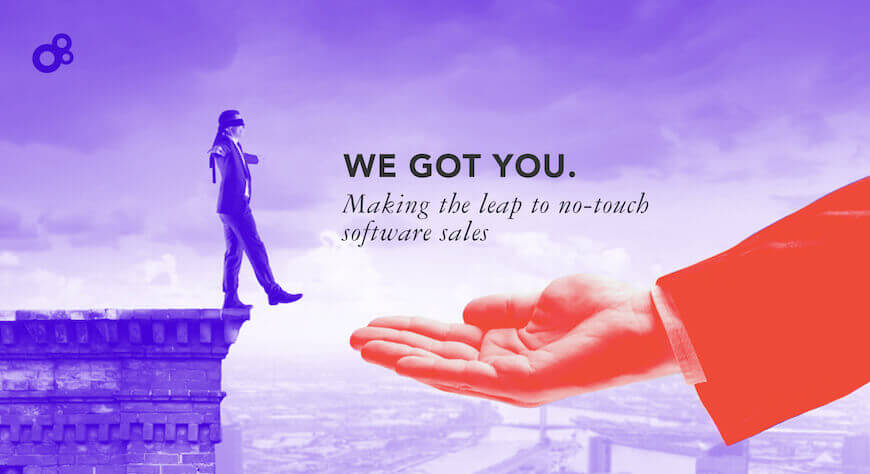
What’s the new normal in business? With companies reopening, we’re about to find out. COVID-19 disrupted so much, but at the same time, some of the changes companies quickly adopted have shown promise. Remote productivity myths have been shattered. Cost savings have already raised eyebrows.
It’s clear many of these temporary adjustments are going to remain long after restrictions are lifted.
Arguably, software companies were best-poised to handle the pandemic. Their personnel are typically more accustomed to change and experienced with working remotely. However, when it comes to sales, their teams are no different. Contact is important, and complex technology, in particular, requires education and hand-holding – which isn’t possible in this age of no-touch software sales.
That said, if you’re a software sales pro, sales engineer or manager, you’re likely rethinking your strategies and processes. Here’s some advice to help you find the right approach, tools and touch.
Look before you leap
Software teams rely on high-touch sales approaches, ones involving face-to-face time, particularly in pre-sales where a hands-on trial can make all the difference. In the past, on-site demos and proofs of concept (POCs) were used to highlight value and take customers through an “experience.”
Now, new methods are required to fill the personal void brought about by the pandemic.
This has propelled many organizations to try basic platforms like Zoom and WebEx; great tools for general conferencing purposes. But, they are relatively static, and in the software sales world, fall far short on engaging prospects. Other solutions can be more effective, all of which should be evaluated with two key factors in mind.
The first is accuracy. Being able to test and experience software in conditions that are as close as possible to a prospect’s IT environment is critical. The more authentic and realistic the demo or POC, the better a decision-maker can see how pain points can be resolved and cost-efficiency improved with your solution.
Second, simplicity is key to success. The ability for a sales team to easily conduct demos can increase outreach volume, eliminate friction and accelerate cycles. Complexity, on the other hand, is a drain on resources and time. Further, when complexity discourages users, trials are abandoned and sales are lost.
That said, before making the leap and investing, be sure your software sales team is supported by technology that can fully showcase your software realistically and simply.
Sales Enablement in a new word: Challenges, Skills and Tech – Webinar

Know your limits
Running a sales demo on-site with dedicated hardware provides a realistic, accurate experience for testing software where it’s intended – in a prospect’s environment. Still, on-site can be costly and difficult to scale. Equipment needs to be shipped, logistics ironed out, IT permissions granted, tech staff involved.
Software vendors have long wanted to reduce customer acquisition costs. And, shortening the sales cycle does favor a lower-touch model for engagement. Helping this along are things like video tutorials, personalized sales content, video-enabled demos. Conferencing and collaboration platforms can also provide a low-touch, simpler means with apps and cloud services.
But these approaches, again, are limited. While answering the need for simplicity, they don’t deliver the accuracy and full experience of on-site demos and POCs. Prospects are unable to realistically evaluate how the software will perform when it finally is deployed into production.
If you’re a decision-maker, that’s something you’d like to know before purchasing.
Virtually yours
The best approach is to conduct software sales in environments as realistic and accurate as the real thing. We’re talking about targets seeing your actual product in-action, solving real-world problems, and if they’re at the controls using your tools to do so, even better.
Virtual IT labs, a technology that’s been around for over a decade, is the only solution that allows just that. Software vendors can make versions of their actual solutions available in a virtualized, cloud-based environment, creating scenarios that give prospects a true sense of what the product can do.
Unfortunately, not all virtual IT labs are the same. Some lack key capabilities, haven’t evolved or are regarded as just for the tech savvy. What’s needed is a “sales acceleration” cloud-based solution, one with powerful virtual labs that are easily used by a wider audience.
Further, the solution should be part of a purpose-built platform. It should include self-service capabilities, analytics, flexible access and usage privileges, integration with core business tools, features for automating processes and more.
The right virtual IT labs will bring you these things and help make those software deals yours, faster.
Future proof
Software vendors shouldn’t settle for a trade-off between accuracy and simplicity. What they need is to be more agile and engaging. With technology like virtual labs, they can increase their competitiveness and gain the right touch to close those personal gaps and more sales.
In fact, this should be seen as an opportunity, not just to increase the efficiency of software sales moving forward, but to leapfrog ahead technologically and future proof operations against further disruptions.


